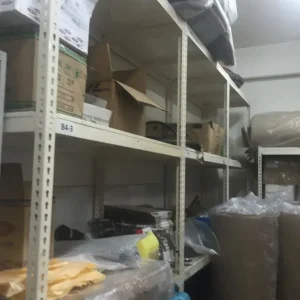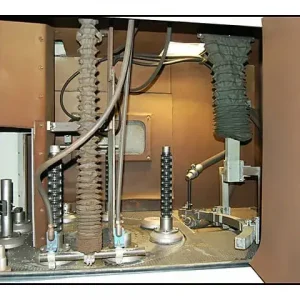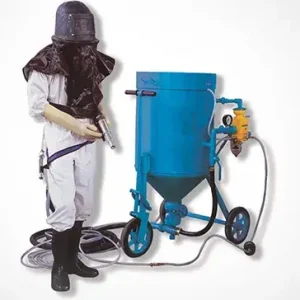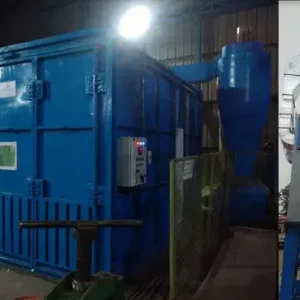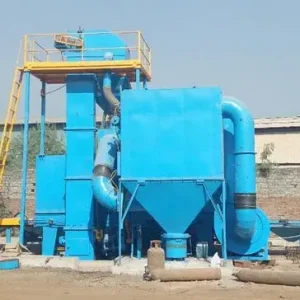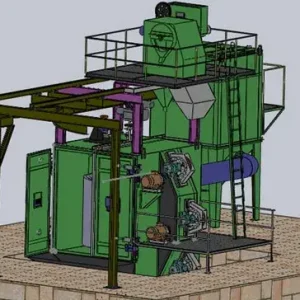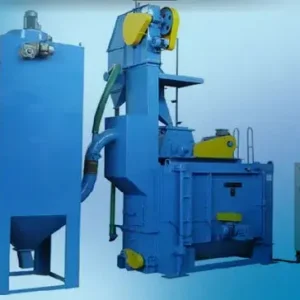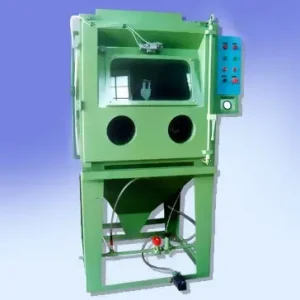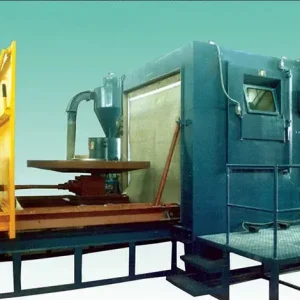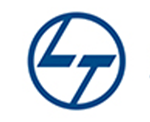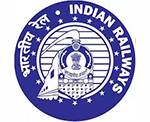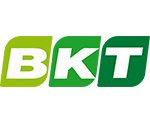By AeroWheel Surface Finishing
Sand blasting is a powerful and effective technique for cleaning, surface preparation, and finishing in a wide range of industries. But with that power comes responsibility. If not handled properly, sand blasting can pose serious health and safety risks to operators and nearby workers.
At AeroWheel Surface Finishing, we believe that a clean surface is never worth risking someone’s well-being. That’s why we’re committed to promoting safe blasting practices through the right equipment, training, and safety awareness.
In this guide, we break down the most important safety guidelines every sand blasting operator should follow—whether you’re working in a large industrial facility or at a field site.
1. Always Wear Personal Protective Equipment (PPE)
Sand blasting creates high-velocity particles and dust, which can be harmful if inhaled or if they come into contact with your skin or eyes.
Essential PPE includes:
- Blast suit or coveralls – Protects skin and body from flying abrasives
- Blast helmet with air supply – Provides respiratory protection and clear vision
- Heavy-duty gloves – Prevents hand injuries
- Safety boots – Shields feet from abrasive rebound
- Ear protection – Reduces risk of hearing loss from loud air compressors
Always inspect your PPE before use and replace any damaged or worn-out gear.
2. Use the Right Abrasive for the Job
Some abrasives generate more dust or may be harmful if used improperly. For example, silica sand can cause lung disease (silicosis) and is banned or restricted in many regions.
Safe alternatives include:
- Garnet
- Steel grit
- Glass beads
- Aluminum oxide
- Crushed walnut shell
Always consult the abrasive’s safety data sheet (SDS) and use dust extraction systems.
3. Work in a Well-Ventilated or Controlled Environment
Blasting creates a cloud of fine particles that can quickly fill a workspace. To reduce exposure:
- Use blast cabinets or enclosed blast rooms when possible
- Install dust collectors or exhaust fans
- Avoid blasting in closed, poorly ventilated areas
- Keep bystanders out of the blast zone
Proper ventilation ensures a healthier environment and prevents buildup of combustible dust.
4. Check Hoses and Connections Before Every Shift
A damaged hose or loose coupling can result in a sudden release of high-pressure air and abrasive—putting the operator at serious risk.
Inspect for:
- Cracks, cuts, or wear on hoses
- Secure nozzle and fittings
- Leaks or weak connections
Replace damaged hoses immediately and only use parts rated for high-pressure blasting.
5. Follow Lockout/Tagout and Equipment Shutdown Procedures
Before performing maintenance or changing parts:
Wet vs Dry Sand Blasting – What’s the Difference?
AUTOMATIC MATTE FINISHING OF MOULDS
The Complete Guide to Sand Blasting Machines
- Turn off the air compressor
- Depressurize the blast pot
- Disconnect power if necessary
- Tag the machine to prevent accidental use
This prevents unexpected blast discharge and ensures safe servicing.
6. Maintain a Safe Blasting Distance
The nozzle should never be directed at yourself or anyone else. Maintain a safe distance from the workpiece and ensure:
- The blast area is cordoned off
- Warning signs are clearly displayed
- Only trained personnel are in the vicinity
Accidental exposure to blasting media can cause severe injury.
7. Keep the Work Area Clean and Organized
Slippery floors, scattered hoses, and cluttered tools are a recipe for accidents.
- Sweep up spent abrasive regularly
- Store tools properly
- Avoid trip hazards
- Keep emergency exits and fire extinguishers accessible
A tidy workspace is a safe workspace.
8. Get Trained Before Operating Any Sand Blasting Equipment
Every operator should receive proper training that includes:
- Machine controls and setup
- Safe handling of abrasives
- PPE usage
- Emergency response and first aid
- Routine maintenance practices
Don’t operate a blasting machine unless you’re fully trained and authorized.
9. Be Aware of Heat and Noise Risks
Extended blasting sessions can create high noise levels and heat buildup in confined spaces. Take regular breaks, stay hydrated, and use hearing protection.
If working outdoors, be cautious of sun exposure and fatigue.
10. Keep a First Aid Kit and Emergency Plan Ready
Despite all precautions, accidents can happen. Make sure:
- First aid kits are stocked and accessible
- Operators know how to respond to eye injuries, abrasions, or breathing difficulties
- Emergency contacts and evacuation plans are clearly posted
Conclusion
Sand blasting is highly effective—but only when done safely. At AeroWheel Surface Finishing, we don’t just build machines—we build trust by prioritizing safety. Whether you’re blasting metal, concrete, or stone, these safety guidelines will help protect your team, your workspace, and your investment.
By following these practices and using quality equipment, you ensure that productivity and safety go hand in hand.
📞 Need help with operator training, safety gear, or blast system setup?
Talk to our team at AeroWheel Surface Finishing. We’re here to support your success—safely and effectively.








